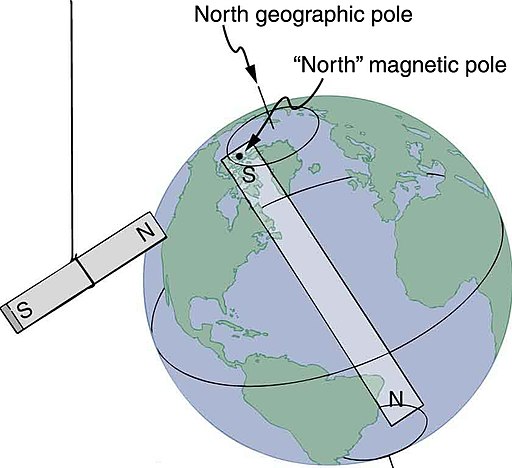The magnetic North Pole has left Canada and it has passed the geographic pole and is now heading towards Siberia.
What? Does that mean Santa's workshop was in Canada and is now going to Russia?
In 1831, the British explorer James Clark Ross determined the position of the magnetic North Pole accurate to within a few miles for the first time. He found it on the Boothia Peninsula in Nunavut, northern Canada.
But even that far back, we knew that the pole moved. It moves slowly, but it moves.
In the early 1900s, the Norwegian explorer Amundsen rediscovered it nearby. Throughout that century it continued to move slowly northwards at a rate of up to 9 miles (15 kilometers) per year.
In 1990, it suddenly started speeding up in his northern journey.
In 2017, it passed the geographic North Pole and is now heading south towards Siberia.
I should point out here that a magnetic compass does not point to the geographic north pole, but it does point to the Earth's magnetic poles.
I used to teach classes about using a map and compass and I had to teach something about magnetic north and declination.
According to the usgs.gov: "At most places on the Earth's surface, the compass doesn't point exactly toward geographic north. The deviation of the compass from true north is an angle called "declination" (or "magnetic declination"). It is a quantity that has been a nuisance to navigators for centuries, especially since it varies with both geographic location and time. It might surprise you to know that at very high latitudes, the compass can even point south!"
The official magnetic north position is updated every five years but in 2019, it moved unexpectedly fast and an extra update was issued so that navigation devices that rely on it could be corrected.
But why is it moving and now moving faster?
Articles online point to research by Philip Livermore at the University of Leeds in the U.K and his couple of colleagues. They say the position of the pole is the result of the pull between two patches of negative magnetic flux sitting below Canada and Siberia and that recently the Canadian patch has weakened allowing the Siberian flux to pull the pole in its direction. They say this happened because of a change in the flow of liquid iron in the Earth’s core in the 1970s and the way the corresponding change in the magnetic field diffused through the mantle to the surface.
In the next decade, it will move 660 kilometers (370 miles) in the next decade.
A century ago, we determined the pole's position by watching the orientation of compass needles, but for the past 30 years satellites have been monitoring the magnetic field continuously.
All of this is pretty surprising. Here's one last slap at your mind: The magnetic pole near Earth's geographic north pole is actually the south magnetic pole! You probably know that with magnets, opposites attract. The north end of a magnet in a compass is attracted to the south magnetic pole, which lies close to the geographic north pole.
And that Santa moving question? Santa's workshop is located at True North (also called geodetic north or geographic north) and it's not moving.
SOURCES:
arxiv.org

No comments:
Post a Comment